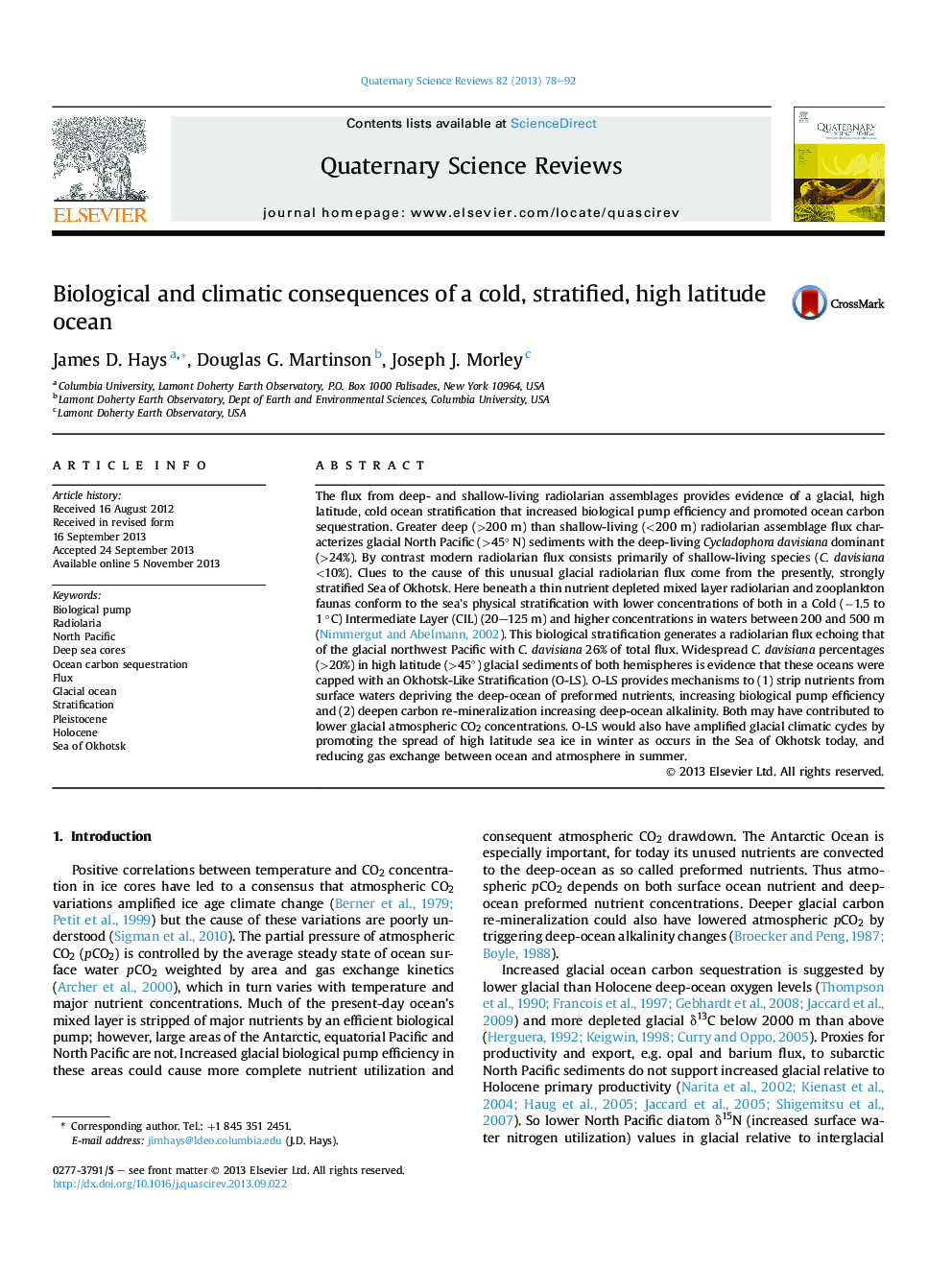| کد مقاله | کد نشریه | سال انتشار | مقاله انگلیسی | نسخه تمام متن |
|---|---|---|---|---|
| 4735431 | 1640852 | 2013 | 15 صفحه PDF | دانلود رایگان |
عنوان انگلیسی مقاله ISI
Biological and climatic consequences of a cold, stratified, high latitude ocean
ترجمه فارسی عنوان
عواقب بیولوژیکی و اقلیمی اقیانوس سرد، طبقه بندی شده و ارتفاع بالا
دانلود مقاله + سفارش ترجمه
دانلود مقاله ISI انگلیسی
رایگان برای ایرانیان
کلمات کلیدی
پمپ زیستی، رادیولاریا، اقیانوس آرام شمالی، هسته های دریای عمیق، جداسازی کربن اقیانوس، شارژ، اقیانوس یخ، طبقه بندی، پلستوسن، هولوسن، دریای اوکوتسک،
موضوعات مرتبط
مهندسی و علوم پایه
علوم زمین و سیارات
زمین شناسی
چکیده انگلیسی
The flux from deep- and shallow-living radiolarian assemblages provides evidence of a glacial, high latitude, cold ocean stratification that increased biological pump efficiency and promoted ocean carbon sequestration. Greater deep (>200 m) than shallow-living (<200 m) radiolarian assemblage flux characterizes glacial North Pacific (>45° N) sediments with the deep-living Cycladophora davisiana dominant (>24%). By contrast modern radiolarian flux consists primarily of shallow-living species (C. davisiana <10%). Clues to the cause of this unusual glacial radiolarian flux come from the presently, strongly stratified Sea of Okhotsk. Here beneath a thin nutrient depleted mixed layer radiolarian and zooplankton faunas conform to the sea's physical stratification with lower concentrations of both in a Cold (â1.5 to 1 °C) Intermediate Layer (CIL) (20-125 m) and higher concentrations in waters between 200 and 500 m (Nimmergut and Abelmann, 2002). This biological stratification generates a radiolarian flux echoing that of the glacial northwest Pacific with C. davisiana 26% of total flux. Widespread C. davisiana percentages (>20%) in high latitude (>45°) glacial sediments of both hemispheres is evidence that these oceans were capped with an Okhotsk-Like Stratification (O-LS). O-LS provides mechanisms to (1) strip nutrients from surface waters depriving the deep-ocean of preformed nutrients, increasing biological pump efficiency and (2) deepen carbon re-mineralization increasing deep-ocean alkalinity. Both may have contributed to lower glacial atmospheric CO2 concentrations. O-LS would also have amplified glacial climatic cycles by promoting the spread of high latitude sea ice in winter as occurs in the Sea of Okhotsk today, and reducing gas exchange between ocean and atmosphere in summer.
ناشر
Database: Elsevier - ScienceDirect (ساینس دایرکت)
Journal: Quaternary Science Reviews - Volume 82, 15 December 2013, Pages 78-92
Journal: Quaternary Science Reviews - Volume 82, 15 December 2013, Pages 78-92
نویسندگان
James D. Hays, Douglas G. Martinson, Joseph J. Morley,
